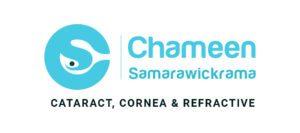
Eye illnesses can be a significant obstacle in your life, particularly when left undiagnosed. They can affect many aspects of your life and leave you in a difficult situation. However, the good news is that there’s a solution for almost every eye condition, including keratoconus, which was long considered incurable.
What is Keratoconus?
Keratoconus is a common eye disease that affects the cornea, the front layer of the eye responsible for refracting and focusing light for vision. People with this condition experience a gradual thinning and warping of the cornea, causing it to change from its typical rounded shape to a cone shape.
This change limits the focusing of light onto the retina, resulting in various visual impairments such as blurred vision, astigmatism, double vision, myopia, and increased sensitivity to light. While some may manage these symptoms or ignore them, they can ultimately lead to severe vision loss if left untreated. Therefore, it’s crucial to address the issue promptly.
Keratoconus: A Concerning Eye Condition Affecting Important Life Stages
One of the most concerning aspects of keratoconus is that it typically affects individuals aged 16 to 35, a crucial period in life where academic and career pursuits are paramount. Timely treatment is essential during this period as keratoconus can significantly impact personal development.
How to Diagnose Keratoconus by Identifying Symptoms?
In its early stages, keratoconus may not present noticeable symptoms. However, as the condition progresses, it can cause blurred and distorted vision, sensitivity to light, seeing halos around light sources, and double vision, especially at night.
Why is Keratoconus Difficult to Diagnose?
Diagnosing keratoconus can be challenging due to its common yet easily overlooked symptoms. A specialist equipped with a corneal mapping camera is required for accurate diagnosis, which may not be available at all ophthalmologist clinics. Therefore, it’s essential to consult specialists who can recognise keratoconus signs and refer you to the appropriate diagnostic tools.
Treating Keratoconus Effectively
Once diagnosed, prompt treatment is crucial. It’s important not to blame yourself for developing this condition, as it’s primarily caused by genetic factors.
Treatment options include:
- Corneal Collagen Crosslinking: A modern treatment that involves applying vitamin B2 drops followed by exposure to UV A light, aimed at slowing the disease progression by strengthening the cornea.
- Vision Correction Methods: In the early stages, vision correction can be achieved with glasses or soft contact lenses. As the condition progresses, hard contact lenses may be necessary for vision correction.
- Advanced Cases: Severe cases may require corneal transplant surgery to improve vision.
Corneal Transplant Surgery: A Last Resort
Before and during surgery:
- Preparation and Evaluation: A thorough evaluation of the patient’s eye health and medical history is conducted.
- Donor Tissue Matching: Suitable corneal donor tissue is matched with the patient.
- Surgical Procedure: The patient undergoes local or general anaesthesia while the surgeon carefully replaces the damaged corneal tissue with donor tissue. Various techniques may be used depending on the patient’s condition. It’s important to note that even after surgery, glasses or contact lenses may still be needed for optimal vision correction.
Final Thoughts: Choose a Highly-Skilled Expert for Life-Changing Surgery
Keratoconus surgery can be life-changing for those affected, but it’s a delicate procedure requiring skilled professionals. Seek treatment from ophthalmologists with proven expertise to ensure the best outcome.
